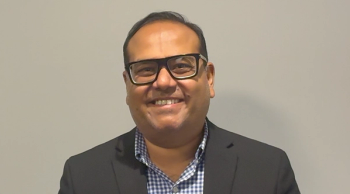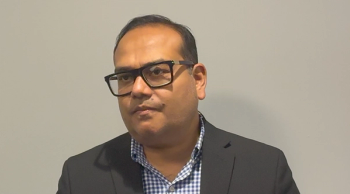
Adding an Oncolytic Virus to Neoadjuvant Chemo for Triple-Negative Breast Cancer
A small early-phase trial tested the addition of the oncolytic virus T-VEC to neoadjuvant chemotherapy in patients with triple-negative breast cancer.
A small early-phase trial found that incorporating the oncolytic virus talimogene laherparepvec (T-VEC) into neoadjuvant chemotherapy was feasible and tolerable for patients with triple-negative breast cancer (TNBC). The regimen also showed promising efficacy in this small cohort of patients. These results were presented at the American Association for Cancer Research (AACR) Annual Meeting, held March 29–April 3 in Atlanta (
“Many have published data looking at the relationship between attaining a pathologic complete response [pCR] after neoadjuvant chemotherapy, and found that it is associated with an improved prognosis and reduced likelihood of recurrence,” said
Researchers hypothesized that use of an oncolytic virus like T-VEC, a virus derived from the herpes simplex virus-1 currently approved to treat melanoma, during neoadjuvant chemotherapy can improve pCR rates through tumor cell lysis and recruitment of a robust immune response, which may be particularly helpful in immunologically “cold” tumors.
The study included 9 patients (10 consented, but 1 then withdrew consent prior to treatment) with TNBC. They were treated with paclitaxel, given weekly for 12 weeks, along with 5 doses of T-VEC at several dose levels given at weeks 1, 4, 6, 8, and 10 of the paclitaxel therapy. Patients then received doxorubicin and cyclophosphamide. All the patients were female; 55% were white, 22% were black, and 22% were other races.
No dose-limiting toxicities were observed during the study. The most common adverse events related to T-VEC included fever (89% at any grade, 11% grade 3 or 4), injection site reactions (44% all grades, no grade 3 or 4 cases), and chills (33% all grades, 11% grade 3). Serious adverse events in the study included pulmonary embolism and severe postoperative brachycardia. One episode of latent genital herpes reactivation was observed.
Though efficacy was not a primary study endpoint, the treatment showed some promising results. Five of the nine patients had a pCR (55%). “Even in the patients with residual disease, they had almost complete obliteration of their tumors as well,” Soliman said. “Incorporation of T-VEC into neoadjuvant chemotherapy for TNBC is feasible at full FDA-approved doses.” He noted that a single-arm phase II study is now ongoing and actively recruiting patients to further evaluate the regimen’s efficacy and to assess immune correlates.
During the discussion period, another audience member noted that steroids that many patients receive might change the efficacy of the vaccine. Soliman agreed and said they generally gave only “a couple of doses” of steroids before the study treatment began.
Newsletter
Stay up to date on recent advances in the multidisciplinary approach to cancer.





















































































